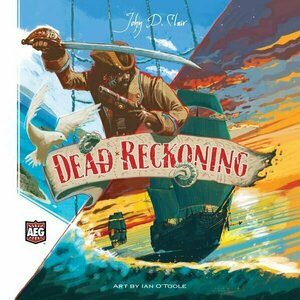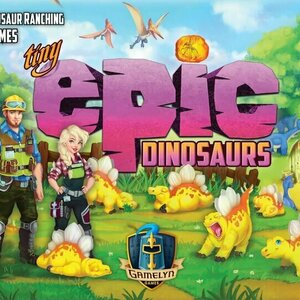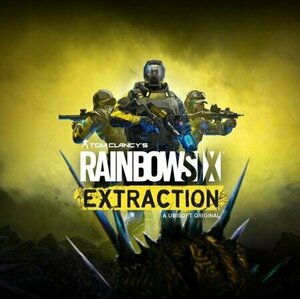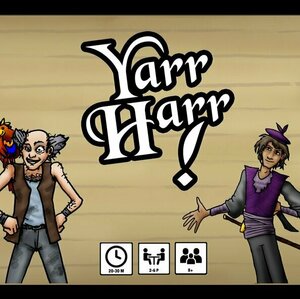Gareth von Kallenbach (980 KP) rated the PC version of Tom Clancy's Rainbow Six: Extraction in Video Games
Jan 26, 2022
The series features intense squad-based action as players form teams to infiltrate, extract, eliminate, and survive various missions.
Using stealth, tech, weapons, and patience; players have to find the best way to enter a location, avoid or eliminate enemies, and complete objectives while working as a cohesive unit.
This time around the enemy is a parasitic alien race and players must form three-person squads or venture through the locales solo or with a single partner.
Players will select an operative; each with a primary and secondary weapon and two tactical devices such as grenades, mines, revive shots, armor, and drones. As time goes on and players level up; new technology can be researched and used as having the right loadout is essential. Players will also have unique skilsl ranging from gun emplacements, medical, cloaking, and more which can be used in a limited situation and must be replenished as the missions unfolds.
Missions are set in three zones such as New York, San Francisco, Alaska, and more become available as players reach a certain level and naturally they become progressively harder and more intense.
Each zone has random missions and when players select a locale, difficulty level, and their operative; they will encounter missions ranging from elimination, extraction, scanning, and targeting specific strategic locales.
The enemy is very cunning and ruthless and can cloak, shape-shift, and explode amongst their myriad of hostile actions, and players must attack, evade, and work with one another to complete the missions and survive. At the end of a level; players can opt to enter an airlock and move to the next segment or return to an exfiltration zone to end the mission.
This is where the real tactics of the game come into play as health is limited as can be ammunition so players who encounter a difficult mission where they sustain damage or lose a player have to make a hard choice. Players do not die in the game as they are enveloped with a stasis foam should they sustain enough damage.
As such the remaining team must decide to carry the downed player to an Extraction Pod or leave them behind so they can carry on or they can flee to safety. This is not always an easy decision as seeing your team decimated and barely making it to safety with only a small amount of health makes even the most determined player think twice about venturing back in.
Should a player be lost; their experience is deducted from the player and will remain deducted until the character is rescued on a future mission. Seeing your roster of skilled Operatives reduced to a couple of unproven newbies is very humbling and thankfully the maps are very detailed and engaging as players will get very used to playing in the locales frequently before new areas are made available to them.
The action of the game is intense as players can use stealth or run and gun depending on the mission and the variety of enemies and missions is good.
I do wish the Quick Play would allow players to select the skill level they would like to play in and that there was a server list to select from; that being said; at $39.99 and available on Game Pass; Rainbow Six Extraction is a great deal as the cross-play enabled game ensures plenty of players to venture into danger with but like the best games of the series; having the right group of players is essential as I have lost many players due to wild cards not following mission objectives.
Intense, engaging, and deeply entertaining; Rainbow Six Extraction delivers even if it does differ from what fans have come to expect.
4 stars out of 5

Sir Curtly Ambrose: Time to Talk
Richie Benaud, Curtly Ambrose, Richard Sydenham and Steve Waugh
Book
Sir Curtly Ambrose is one of the most famous cricket players of all time. He is also notorious for...
Purple Phoenix Games (2266 KP) rated Tiny Epic Western in Tabletop Games
Dec 30, 2021
Disclaimer: I do not intend to rehash the entire rulebook in this review, as there are just too many details, but will instead provide a more general overview of the rules and gameplay. -L
Tiny Epic Western is a game of worker placement and set collection in which players are trying to amass the most end-game victory points. Played over a series of rounds, players will be placing their Posse (Meeples), collecting Influence and taking actions, dueling opponents (if necessary), playing a bit of poker, and buying buildings in an effort to become the most powerful boss in this wild west town. To setup for a game, place the Location Mats as described in the rules, dealing a Building Card where appropriate. Each player receives a Boss card, 3 Posse tokens (Meeples), and one of each of the Influence trackers (Money, Law, and Force), placed on the 1 space of their card. Shuffle the decks of Building Cards and Poker Cards separately, choose a starting player (who receives the Dealer token), place the Wanted card/Gunslinger dice in the center of the play area, and the game is ready to begin! Pictured below is the starting setup for a 3-player game.
The game is played over 6 total rounds, each of which is broken into 4 phases: Shuffle and Deal, Posse Placement, Resolution, and Buy. To start a round, the Dealer shuffles the deck of Poker cards, and then deals 1 card face-up to the 6 empty spaces between the Location Mats. One Poker card is dealt face-down to the Rival Space (under the Town Hall Location Mat), and 2 Poker cards are dealt face-down to each player. Players look at both of their cards and pick 1 to keep, discarding the other. The round then moves to phase 2: Posse Placement. Starting with the Dealer, players will take turns placing Posse tokens onto the placement spots on any of the Location mats. All placement spots grant unique benefits (collecting different Influence or performing Building card actions) that are performed either immediately or during later phases of the round. What happens if an opponent took a placement spot that you wanted? Then it’s time for an old-fashioned duel! The dueling players each roll a Gunslinger die, modify it if they so choose, and determine a winner. Players continue taking turns placing Posse tokens until all available Posse tokens have been placed.
When all Posse tokens have been placed, the round moves to phase 3: Resolution. The first step of this phase is to reveal Poker cards – all players reveal their cards, and the card in the Rival Space is also revealed. Moving clockwise from the Town Hall, each Location will be resolved by ‘playing’ three-card poker. Each Location has 2 Poker cards directly adjacent to it (placed between the Locations in phase 1), and those 2 cards plus the one in your hand will form your Poker hand. Any players with Posse tokens on the Location will compare their Poker hands to determine a winner. If you win the hand, you collect the Winner’s Pot (extra benefits) and are able to collect any delayed benefits from placement spots in the Posse Placement phase. Losing the hand earns you nothing *womp womp*. If you are the only Posse on a Location (with no opponents) you will compare your hand to that of the Rival. The Rival’s hand uses the cards adjacent to the Town Hall, plus the revealed card in the Rival Space. If you have a better hand, you win the benefits on your Location. If the Rival wins, though, you do not collect these benefits. All Locations are resolved in this fashion before the last phase of the round, Buy, begins.
To start this phase, all players will compare their three-card Poker hands using the 2 Poker cards adjacent to the Town Hall. The player with the best hand will act first in this phase, followed by the next best hand, and so on. The first player may now choose to buy a Building card from any Location on which they have a Posse token. Pay the requisite amount of Influence to purchase a Building, and add it to the Porch Slot on your color-corresponding Location Mat. The power granted by this Building card is now available for use in future rounds. Once all players have had the option to purchase a Building, the player with the best hand will advance one of the Industry Tokens at Town Hall. The placements of Industry Tokens will affect end-game scoring, so keep that in mind as the game progresses. When all steps of the Buy phase are performed, the round now ends. Players collect all their Posse tokens back to their boss cards, all Poker cards are collected and re-shuffled, new Building cards are dealt to Locations from which they were purchased this round, and the Dealer token is passed to the next clockwise player. If a player did not buy a Building at all during the round, they have gained the Third Posse Benefit for the coming round – granting them an additional Posse token to place during phase 2. Otherwise, all players will only ever have 2 Posse tokens to place.
After a total of 6 complete rounds, the game ends and points are tallied. Victory Points are earned from Building cards bought throughout the game. Building cards have a specified VP amount, and also have a collection of Industry Icons on them. Using the final placement of the Industry Tokens on the board, players will earn points for Industry Icon sets they have collected. And finally, whomever holds the Wanted card (won the last duel) gains an additional 2 VP. Points are all counted, and the player with the highest score is the winner.
That all probably sounds pretty complicated. But I do have to say that verbally explaining/teaching the game (and being able to use components for examples) is waaaaay easier than doing so through a text review. So please do not let the seemingly complex gameplay turn you off from this game. Once you get a basic understanding of the phases of each round, the game moves along pretty seamlessly. Honestly, the biggest learning curve for me to conquer was playing three-card poker. As someone who has never played any form of poker before, this was probably what had me most hesitant about learning TEW. After having played it now, three-card poker really isn’t too complicated, and there are some nice player reference cards to help you figure it out.
Aside from the poker element, this game really comes down to worker placement and strategy. Each Location card only has a finite number of placement spots, and the resources required to buy Buildings are not exactly in abundance. This affects your strategy, as you must decide which resources to collect at what times, as well as deciding whether you need to duel someone for a coveted resource. Another element to your strategy? You may only buy Building cards from Locations on which you have a Posse token. Maybe none of those placement spots really appeal to you this round, but you reaaaaally want that specific Building card. Are you willing to ‘burn’ a Posse token for the chance to buy it? Or is there a different Location that offers a useful resources and a desirable Building card? Also, keep in mind how your poker hand will come into play. Since poker cards are dealt to each Location at the start of a round, you are able to see what your hand will be for each Location. Maybe you have a pretty strong hand at the Bank Location, but at the Courthouse the cards end up being a bust. Are you willing to risk a placement in hopes that you have the best hand of the bunch? Because remember – if you don’t have the best hand at a Location, you get no resources/rewards! There are so many elements to a successful strategy with this game, and it really keeps all players engaged at all times. Be warned though – the variety of strategic options could be difficult for some AP-prone players.
Let me touch on components for a minute. As with all Tiny Epic games, the production quality of TEW is pretty stellar. The cards are nice and sturdy, and the iconography is clear. The Posse tokens are cute Meeples with cowboy hats, and they are nice and chunky. The only thing I don’t really like about this game are the Gunslinger dice. In theory, they are super cool, but in actual execution, they leave much to be desired. The numbers aren’t really clearly define, so they’re a bit tricky to read. Aside from that, a pretty high quality game here.
So all in all, how does Tiny Epic Western stand up in the series? It is definitely one of the heavier games of the bunch, and there is so much more going on than initially meets the eye. It feels daunting for the first few plays, but once you get the phases under your belt, it really flows pretty well. I can’t say that it is my favorite Tiny Epic game, as I just personally feel like there are too many elements going on at the same time. You’re strategizing your worker placement, but also need to consider buying Buildings for VP and to collect sets of Industry Icons and for their specific abilities, as well as figuring out your poker hand for 5 different Locations, and dealing with duels. Some people might really be into that amount of strategic forethought, but it feels a bit cumbersome to me. That being said, Purple Phoenix Games gives this three-card poker game a 3/6. The gameplay is decent, just not really my kind of game.
Purple Phoenix Games (2266 KP) rated Yarr Harr! in Tabletop Games
Jul 2, 2020
Disclaimer: We were provided a copy of Yarr Harr! for the purposes of this preview. The final components of the upcoming Kickstarter campaign might vary slightly from those pictured below. Also, our copy had some extra cards/content that will be available as Stretch Goals during the campaign. -L
Yarr Harr! is a competitive card game in which players are building up their individual pirate ships and trying to amass the most Doubloons by the end of the game. The gameplay itself is pretty simple, but actually winning takes more strategy than you might think. To setup the game, every player receives a Bow and Stern card for their Harbor (play area), and a starting hand with 5 cards. The remaining cards form the Draw deck for the game, and is placed in the center of the play area. On your turn, you will draw 2 cards from the Draw deck, and then play up to 3 cards. There are 2 different types of cards that can be played: Ship cards and Action cards. Ship cards, played between your own Bow and Stern cards, are used to build up your ship and score points at the end of the game. Action cards are used to sabotage opponents or to give yourself a buff. You may not play more than 2 Ship cards in one turn, and you may only have a maximum of 8 cards in your hand at the end of your turn. Play continues as such, until the end-game requirement has been met. That requirement depends on the number of players in the game, and tells you how many Ship cards must be in your own Harbor for the game to end. As soon as any 1 player achieves that number, the game ends. Players then tally up all of the Doubloon points on the Ship cards in their Harbor, subtracting any negative points from Action cards affecting their ship, and the player with the most Doubloons wins!
The thing that I like about Yarr Harr! the most is that it can be played with differing levels of strategy. The game comes with a number of Captain cards and Objective cards that are optional to use in play. To include Captain cards, each player receives 1 Captain card at the start of the game, which grants special abilities throughout the game, depending on the given Captain. To play with Objective cards, each player receives 3 Objective cards at the start of the game, and then selects 2 to keep for play. Objectives are kept secret from your opponents, and will earn you end-game Doubloons upon completing them. With these optional modes of play, you can really cater the strategic level to that of your current game group. You can play with younger gamers with no extra content, just the base game as described above. If you are looking to turn this into a possibly more difficult game, add in those Captain and Objective cards. Offering those optional elements is a huge plus because it makes Yarr Harr! accessible to more gamers. So that’s a big win to me.
The other thing that I really like about Yarr Harr! is that the gameplay is pretty light and fast. It is easy to teach, learn, and play, thus lending itself to lots of gaming situations. Need something quick to play before dinner is ready? Yarr Harr! Want to pick the pace back up after a long, brain-burning game at game night? Yarr Harr! It can fit in wherever you want, and because of that, I can see myself bringing it to the table often. The only warning I have for this game is that, since it is competitive, more sensitive gamers might not find it enjoyable. There are Action cards to be played to directly sabotage and inhibit your opponents, and sometimes that can feel like personal attacks against a player. To alleviate that, I recommend playing at higher player counts, so it doesn’t feel like players are ganging up on a single player. Just something to be aware of! Let’s talk components. This is a card game, and the quality of the cards we received was pretty good. They are nice and sturdy, and could hold up for many plays. The artwork is thematic, creative, colorful, and just enjoyable to look at overall.
All in all, I think Yarr Harr! is a fast and fun game for any type of gamer. The varying degrees of difficulty and strategy make it a versatile game, and I really appreciate that aspect. It is a competitive game, but it feels more light-hearted than cutthroat and that helps keep it enjoyable for all players. If you’re looking for something fun, yet strategic, and easy to play, look no further than Yarr Harr! The Kickstarter campaign begins on June 23rd, so be on the lookout for this awesome little card game!
Rikki Hammond (33 KP) rated Room 25 in Tabletop Games
Jun 19, 2019
The game is played out over 25 room tiles, which are laid out face down apart from the starting room in the middle, and the basic goal is to make it to the elusive Room 25, somewhere out on the grid, but you have to do it quick, as there is a set number of turns to find it in.
Players will simultaneously choose to do 1 or 2 actions on their turn, and can choose to move into a room, thus revealing it's effect to everyone, push another player into a room, peek at a room, or slide a whole row of rooms in the direction of their choosing (nit including the starting room.)
Rooms are split into 3 colours: Green are safe, and can sometimes help you, yellow are normally traps or hinderances, and red rooms can kill you in one way or another (there's even a room that is instant death if you move into it.) Players have to navigate the rooms using their actions, and hope they don't meet their demise.
There are also varying game modes and difficulties to choose from. Competitive pits everyone against each other, co-operative means everyone is trying to work together, and team mode has two groups trying to outwit the other team. You can also adjust the difficulty by adding or removing more yellow and red rooms (the manual has set layouts for the tiles, but you can also customise as you see fit.)
Room 25 has a lot of replayability, but does suffer from a bit of luck. If there is bad decisions made, you can be eliminated very early on. The characters in the base game, although looking cool, have no differences to them either (which is resolved in the expansion.)
These are minor gripes though, and doesn't stop Room 25 being a fast paced, hectic, but enjoyable game.

Pocket Wiki for NHL 17
Reference and Utilities
App
Looking for help or the latest tips for the games NHL 17? This all-in-one solution is exactly what...

MLB Tap Sports Baseball 2017
Games and Sports
App
Tap Sports Baseball 2017 now features the official MLB Teams and MLBPA Players Play Major...

Dead Reckoning
Tabletop Game
Dead Reckoning is a game of exploration, piracy, and influence based in a Caribbean-esque setting....

Tiny Epic Dinosaurs
Tabletop Game
In Tiny Epic Dinosaurs, breakthroughs in modern science have dinosaurs and humans existing side by...




